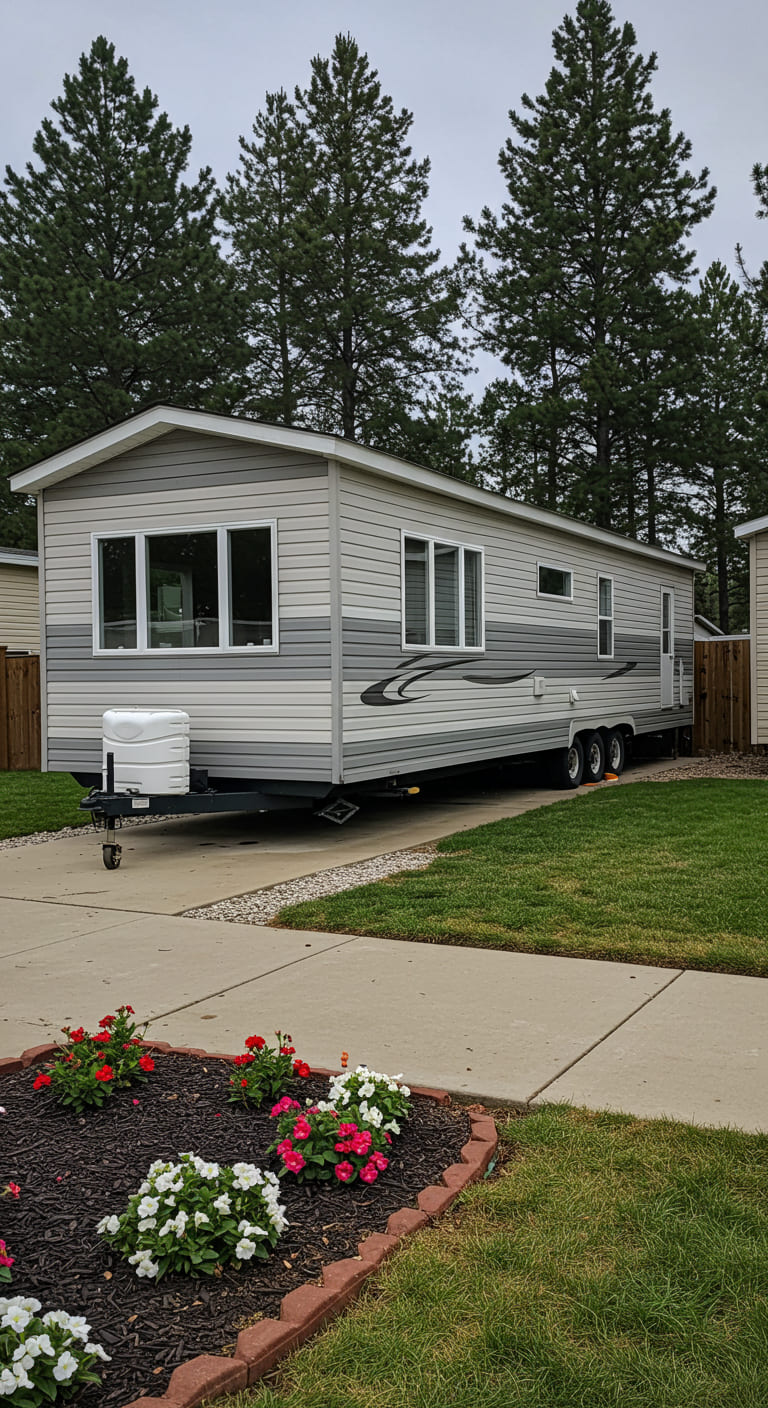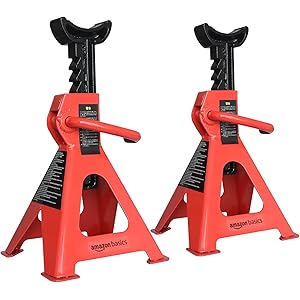When I first considered the idea of living in a trailer home, I was overwhelmed by the sheer variety of options available. The world of trailer homes is vast, with sizes and styles to suit every preference and need. Today, I want to take you on a journey through this fascinating realm, exploring the dimensions, designs, and features of trailer homes that can help you find your perfect fit.
Understanding Trailer Home Sizes
One of the first questions I had was, “How big are trailer homes?” The answer is not as straightforward as it might seem. Trailer homes, also known as mobile homes or manufactured homes, come in various sizes, typically categorized by their square footage and layout.
Standard Sizes of Trailer Homes
To make sense of the options, I found that trailer homes generally fall into a few standard sizes:
- Single-Wide: These are the smallest trailer homes, usually measuring around 600 to 1,300 square feet. They are typically 14 to 18 feet wide and can be an excellent choice for individuals or couples looking for a compact living space.
- Double-Wide: Double-wide trailer homes are larger, generally ranging from 1,200 to 2,400 square feet. They are made by joining two single-wide units, providing more space and a better layout for families.
- Triple-Wide: For those needing even more room, triple-wide trailer homes can exceed 2,400 square feet. These homes offer expansive living areas and multiple bedrooms, ideal for larger families or those who enjoy entertaining.
In my search for the perfect trailer home, I found that understanding these sizes helped narrow down my options significantly. Each size comes with its own unique advantages and can cater to different lifestyles.
Factors Influencing Trailer Home Size
Several factors influenced my decision when it came to the size of a trailer home:
- Family Size: The number of people living in the home directly impacts the space needed. A single person or couple may thrive in a single-wide, while a family with children may require a double-wide or larger.
- Budget: Larger homes typically come with a higher price tag, not only in terms of purchase price but also ongoing costs for utilities and maintenance.
- Lifestyle Preferences: My hobbies and lifestyle choices played a significant role. If I planned to entertain guests frequently, I needed more space for gatherings.
- Location: Depending on where I wanted to park my trailer home, size restrictions may apply. Some parks have specific guidelines on the maximum dimensions allowed.
Styles of Trailer Homes
As I delved deeper into the world of trailer homes, I discovered that the style of a trailer can significantly influence its functionality and aesthetic appeal. Here are some common styles I encountered:
Traditional Mobile Homes
These homes often resemble small, manufactured houses, complete with a pitched roof and traditional siding. They typically feature:
- Full kitchens with standard appliances
- Separate living and dining areas
- Multiple bedrooms and bathrooms
Traditional mobile homes are perfect for those who want the familiarity of a regular house while enjoying the flexibility of a trailer.
Park Models
Park model trailers are designed to be used in recreational areas, often offering a more luxurious living experience. They generally feature:
- Larger floor plans, often exceeding 400 square feet
- High-end finishes and appliances
- Outdoor living spaces, such as decks or porches
These homes are ideal for those who want a vacation retreat or a seasonal residence.
Tiny Homes on Wheels
The tiny home movement has gained traction in recent years, leading to a new category of trailer homes. These homes typically measure less than 400 square feet and are designed for maximum efficiency. Key characteristics include:
- Creative storage solutions
- Open floor plans
- Eco-friendly materials and construction methods
Tiny homes on wheels are perfect for minimalists or those looking to downsize.
Finding Your Perfect Fit
Once I understood the sizes and styles of trailer homes, I was ready to start searching for my perfect fit. Here are some steps I took that may help you in your journey:
1. Define Your Needs
Before I began my search, I took the time to assess my needs and preferences. I asked myself the following questions:
- How many bedrooms do I need?
- What kind of kitchen amenities are essential for my cooking style?
- Do I prefer an open layout or defined spaces?
By clearly defining my needs, I was able to focus on the styles and sizes that suited me best.
2. Set a Budget
Establishing a budget was crucial in my decision-making process. I considered not only the purchase price but also:
- Monthly payments (if financing)
- Insurance costs
- Utility expenses
- Maintenance and repair costs
Having a clear budget helped me avoid falling in love with a home that was financially out of reach.
3. Research Locations
Location is a significant factor in the trailer home experience. I explored various parks and communities, considering:
- Proximity to work, schools, and amenities
- Community rules and regulations
- Availability of utilities and services
Finding the right location ensured that my new lifestyle would be convenient and enjoyable.
4. Visit Homes in Person
While browsing online was fun, nothing compared to stepping inside a trailer home. I made appointments to visit several homes, which allowed me to:
- Get a feel for the space and layout
- Assess the quality of construction and materials
- Visualize how my furniture would fit in
Experiencing the homes firsthand was instrumental in making my final decision.
5. Consider Customization Options
Many manufacturers offer customization options, which can be a significant advantage. I explored the possibility of:
- Upgrading appliances
- Choosing different floor plans
- Selecting finishes and materials
Customizing my trailer home allowed me to create a space that truly felt like mine.
The Benefits of Living in a Trailer Home
As I weighed my options, I discovered numerous benefits to living in a trailer home, including:
Affordability
One of the most appealing aspects of trailer homes is their affordability. On average, trailer homes cost significantly less than traditional houses. According to the U.S. Census Bureau, the average price of a manufactured home was around $100,000, compared to over $300,000 for site-built homes. This affordability made homeownership a reality for me.
Flexibility
Trailer homes provide a unique level of flexibility. I could choose to relocate my home if needed, whether for work, family, or simply a change of scenery. This mobility is a significant advantage, especially for those who enjoy travel or need to change locations frequently.
Lower Maintenance
With fewer square feet to manage, I found that trailer homes often require less maintenance than traditional homes. This aspect not only saves time but also reduces costs associated with upkeep.
A Sense of Community
Many trailer home parks foster a sense of community among residents. I found that living in a trailer home often means being part of a close-knit group that supports one another, which can enhance my overall living experience.
Challenges of Trailer Home Living
While there are many benefits, I also recognized some challenges associated with trailer home living:
Space Limitations
Living in a smaller space means that I must be more intentional about my belongings. Downsizing can be a challenge for those used to larger homes, but it can also be an opportunity to simplify and declutter.
Financing Options
Securing financing for a trailer home can sometimes be more complicated than for traditional homes. I had to research lenders who specialize in manufactured home loans and understand the requirements involved.
Resale Value
While trailer homes can appreciate in value, they often do so at a slower rate than traditional homes. Understanding the market and potential resale value was important as I considered my long-term investment.
Case Studies: Real-Life Experiences
To provide further insight, I explored a few case studies of individuals who have chosen to live in trailer homes:
Case Study 1: The Singleton Family
The Singleton family opted for a double-wide trailer home to accommodate their growing family. They appreciated the affordability of their new home, allowing them to invest in their children’s education. The family reported a strong sense of community in their park, making it easy for their children to make friends.
Case Study 2: Sarah, The Minimalist
Sarah chose a tiny home on wheels to embrace a minimalist lifestyle. She found joy in downsizing her possessions and creating a cozy, functional space. Sarah reported feeling more liberated and less stressed without the burdens of a larger home.
Case Study 3: The Retirees
A retired couple decided to purchase a park model trailer for their seasonal retreat. They enjoyed the high-end finishes and outdoor space, which allowed them to entertain family and friends. Their new home provided a perfect escape during the warmer months.
Frequently Asked Questions
1. Are trailer homes safe?
Yes, trailer homes are built to meet safety standards set by the U.S. Department of Housing and Urban Development (HUD). Many modern trailer homes include advanced safety features and are constructed with durable materials.
2. Can I finance a trailer home?
Yes, financing options are available for trailer homes, but they may differ from traditional home loans. It’s essential to find lenders who specialize in manufactured home financing.
3. How do I maintain a trailer home?
Maintaining a trailer home involves regular inspections and upkeep, such as checking for leaks, ensuring appliances are functioning correctly, and keeping the exterior clean. With less square footage, maintenance is generally more manageable than in traditional homes.
4. What utilities are available for trailer homes?
Most trailer homes are equipped with standard utilities, including water, electricity, and sewage. Some parks may have specific guidelines regarding utility connections.
Conclusion
As I navigated the world of trailer homes, I discovered an array of sizes and styles to fit diverse lifestyles and preferences. From single-wides perfect for individuals to expansive triple-wides suitable for families, there is a trailer home out there for everyone. By defining my needs, setting a budget, and exploring my options, I felt empowered to make an informed decision. With their affordability and flexibility, trailer homes can offer a unique and fulfilling living experience.
If you’re considering a trailer home, I encourage you to take the time to explore your options and find the perfect fit for your life. Remember to share this article with friends and family, and don’t forget to sign up for our newsletter for more insights on trailer homes and living spaces! Let’s embrace this exciting lifestyle together!
Amazon Basics Steel Jack Auto Stands with 6,000 lb or 3 Ton (2.7 metric Ton) Capacity, 1 Pair, Black and Red
$27.92 (as of November 15, 2025 07:52 GMT -03:00 - More infoProduct prices and availability are accurate as of the date/time indicated and are subject to change. Any price and availability information displayed on [relevant Amazon Site(s), as applicable] at the time of purchase will apply to the purchase of this product.)
Sign up for our newsletter and stay up to date with exclusive news
that can transform your routine!





